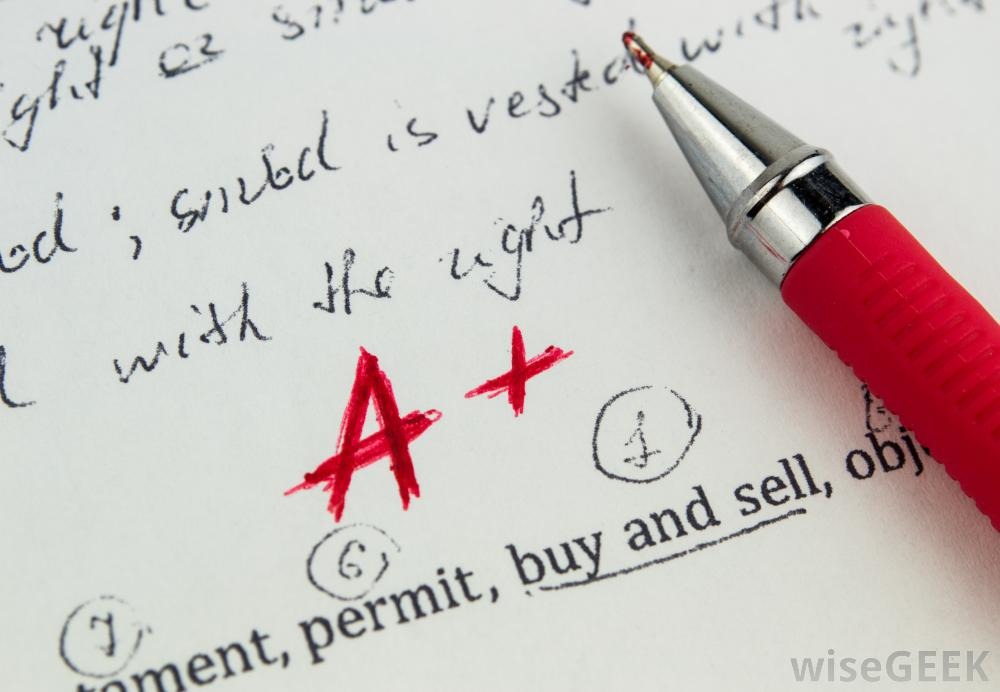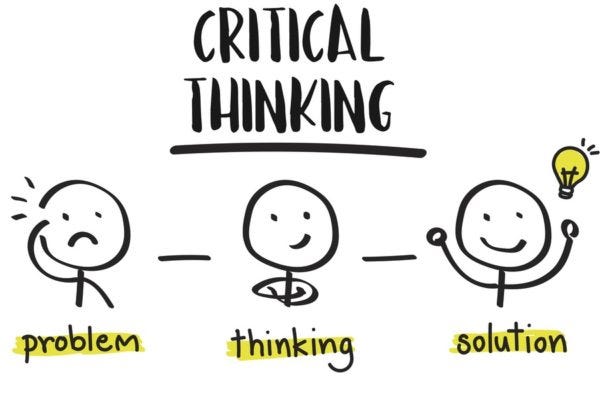
Delve into the nuanced world of education with our blog, ‘The Significance of Paper Marking’. Uncover the transformative role of paper marking in personalized learning, critical thinking, and academic success.This blogpost will cover everything you need to know.
Welcome to the vibrant world of education, where hitting curriculum goals and the countdown to standardized tests create quite the buzz. In this lively setting, let’s take a moment to appreciate a behind-the-scenes hero–Paper Marking. It quietly weaves its influence in the cozy corners of private tuitions and echoes through the school corridors. Join me in uncovering the true essence of paper marking which is more than just grading. Let’s delve into the pivotal role and significance of paper marking as a silent force propelling not only academic growth but also nurturing growth in every direction.
1. Personalized Feedback:

Imagine paper marking as a one-on-one conversation between educators and students, a dynamic exchange that transcends the conventional grading process. It’s not just about marking papers; it’s about providing a personalized roadmap for each student’s academic exploration. Much like a seasoned mentor, paper marking becomes a guiding force, delicately unveiling the intricacies of a student’s strengths and gently illuminating the areas awaiting refinement. This is the significance of paper marking.
In this personalized journey, paper marking transforms into a mentor, not merely assigning grades but meticulously crafting a tailored guide. It’s like having a companion on the educational path, pointing out the scenic spots where a student excels, and navigating through the areas where improvement is a welcome companion. Beyond the numeric representation, paper marking is a compass, offering specific insights that go far beyond a simple measure of performance.
2. Identifying Learning Gaps:

Envision educators as dedicated detectives, armed with pens as their magnifying glasses, meticulously combing through the pages of assignments during the intricate process of paper marking. In this investigative journey, the educators delve beyond the surface, peering into the nuances of each response to uncover hidden learning gaps that might have eluded detection in the bustling atmosphere of regular class sessions.
Through this detective work of paper marking, educators don the role of academic sleuths, seeking clues in the form of misconceptions, hesitations, or areas of conceptual uncertainty. It’s not just about assigning grades; it’s about deciphering the intricate codes embedded in students’ responses, unveiling the narrative of their learning journey.
Identifying these learning gaps becomes akin to solving a mystery, where each uncovered piece of information contributes to a clearer picture of a student’s understanding. Often subtle and nuanced revelations provide educators with invaluable insights into areas where students might need additional support or clarification.
Armed with this detective work, educators can then embark on a mission to bridge these gaps, tailoring their teaching approach to address the specific needs of each student. It’s a targeted and customized strategy that ensures students build a robust foundation before venturing into the more complex terrain of advanced topics.
In this analogy, paper marking becomes the detective’s notebook, documenting the evidence of learning and guiding educators in crafting a tailored educational experience. The process is not just about grading papers; it’s about unlocking the potential within each student, filling in the blanks of understanding, and creating a solid foundation for future academic pursuits, thus highlighting the significance of paper marking.
3. Building Confidence:

Picture constructive feedback as a vibrant cheering squad, enthusiastically rallying behind students to celebrate victories and offer support for the challenges that lie ahead. It’s not merely a set of comments on paper; it’s a chorus of encouragement, lifting students’ spirits with positive reinforcement for tasks well done and providing a supportive melody for areas awaiting a touch of polish.
Receiving this constructive feedback becomes akin to standing amid an applauding crowd, each comment is a cheer that resonates with affirmation. The positive reinforcement for well-executed tasks is like a round of applause, acknowledging the dedication and effort put into the work. It’s a moment of celebration, a recognition that fosters a sense of accomplishment and pride in one’s abilities.
Equally important is the gentle guidance offered for areas in need of improvement. Instead of criticism, it’s a supportive nudge towards growth. Think of it as a coach’s insightful advice, helping a student refine their skills and navigate the path to improvement. This constructive feedback is not about highlighting shortcomings but about illuminating the way forward, ensuring that every student feels empowered to enhance their understanding and performance.
The impact of this feedback extends far beyond the confines of academia. The newfound confidence instilled through positive reinforcement becomes a trusted companion, accompanying students in their journey through various aspects of life. It’s a beacon of positivity that colors interactions, challenges, and endeavors outside the classroom. This positive self-belief becomes a transformative force, shaping not only academic success but also influencing the mindset and approach students adopt in the face of life’s diverse experiences. This is thus, another significance of paper marking.
4. Encouraging Critical Thinking:

Imagine paper marking as a vibrant playground, where the swings of curiosity and the slides of exploration intertwine to create an environment that nurtures critical thinking skills. It’s not a static field but a dynamic space where the emphasis goes beyond the mere pursuit of the correct answer. Instead, it transforms into an arena where the spotlight is on unraveling the intricate reasoning behind each response.
In this playground of paper marking, the goal is not just to reach the destination of a solution but to embark on a journey of understanding. It encourages students to traverse the labyrinth of their thoughts, dissecting the logical pathways that lead to their conclusions. It’s a process that transcends the traditional notion of assessment and dives into the realm of cultivating a habit of analytical thinking.
This approach is like the monkey bars of cognition, challenging students to swing from one idea to another, fostering intellectual agility and flexibility. It’s not a rigid structure but a dynamic landscape where the fertile soil of curiosity is cultivated, allowing the seeds of critical thinking to germinate and flourish.
The invaluable skill of analytical thinking, nurtured in the playground of paper marking, extends its influence far beyond the classroom’s four walls. It becomes a compass guiding students through the maze of real-world challenges, where the ability to dissect complex situations, evaluate information, and formulate reasoned conclusions is paramount.
So, envision paper marking not as a static evaluation but as a dynamic playground where critical thinking takes center stage. It’s a place where the seeds of intellectual curiosity are sown, and the roots of analytical thinking grow deep, preparing students not just for academic success but for a lifetime of navigating the complexities of the world around them.
5. Promoting Accountability:

Visualize the profound sense of responsibility that blossoms within students when they realize that their academic endeavors transcend fleeting moments, destined to be acknowledged and assessed. The mere awareness that their work will undergo scrutiny becomes a catalyst, instilling a robust sense of accountability that permeates the educational atmosphere. This is the significance of paper marking.
This heightened accountability extends beyond the classroom walls, creating a dynamic link between students and their learning journey. It’s not just a commitment to meeting the expectations of a teacher; it’s a personal pact to self-discovery and academic growth. This realization that their efforts are not only seen but actively recognized becomes a powerful motivator, urging students to take ownership of their education.
The ripple effect of this accountability is akin to a student-led movement toward academic empowerment. It transforms the educational landscape from a passive receptacle of knowledge into an active arena where students actively engage with the learning process. The recognition that their work holds weight encourages them to embrace challenges, seek understanding, and navigate the terrain of education with a heightened sense of purpose.
In essence, the knowledge that their efforts will be evaluated becomes a transformative force, elevating the concept of accountability beyond a mere obligation. It evolves into a catalyst for personal growth, fostering a mindset where students not only meet expectations but exceed them, driven by an internal commitment to their intellectual journey. This sense of ownership becomes a cornerstone for a resilient, self-directed approach to learning, a skill set that extends far beyond the academic realm into the vast landscape of lifelong education.
6. Enhancing Communication Skills:

Picture paper marking as a vibrant stage, where students don’t merely submit assignments but embark on a performance to refine their communication skills, crafting each submission with the precision of a seasoned artist. This is not merely a routine evaluation; it’s a transformative process that transcends the boundaries of the written word, evolving into a dynamic symphony of ideas resonating not only within the academic corridors but echoing far into the landscapes of the real world.
In this communicative performance, every word becomes a note, every sentence a melody, and each paragraph a harmonious composition. It’s not just about conveying information; it’s about articulating thoughts with a clarity that cuts through the noise, leaving an indelible mark on the minds of both educators and, eventually, the broader audience that awaits in the real world.
The significance of paper marking is that it is a critical rehearsal for life’s grand stage, a place where students hone their ability to convey ideas effectively, persuasively, and with finesse. The feedback received serves as a director’s insightful critique, guiding students in refining their delivery, and ensuring that their messages are not only heard but resonate deeply with their intended audience.
This process of communication extends beyond the confines of academic essays or assignments; it becomes a rehearsal for real-world scenarios where the ability to express thoughts clearly and precisely is a priceless asset. Whether in professional presentations, interpersonal interactions, or the articulation of personal beliefs, the skills honed in the stage of paper marking become a valuable repertoire that students carry with them into the diverse landscapes of their lives.
7. Preparing for Future Challenges:

In life’s rollercoaster of challenges, the significance of paper marking is akin to a sturdy safety harness, equipping students with constructive criticism for resilience and adaptability. Like an instructor’s guidance before a thrilling ride, this feedback prepares students for the unpredictable journey. Constructive criticism serves as a support system, aiding them in navigating life’s ups and downs.
Setbacks, seen through the lens of constructive feedback, morph into opportunities for growth. Rather than avoiding twists, each comment becomes a stepping stone for reflection, improvement, and recalibration of strategies. This process cultivates a mindset that embraces challenges, viewing them as integral parts of the exhilarating ride.
Students, armed with constructive criticism from paper marking, develop a positive outlook, seeing challenges not as obstacles but as chances to showcase resilience and adaptability gained through the transformative journey of education.
Conclusion-
In conclusion, the blog ‘The Significance of Paper marking’ unveils the pivotal of paper marking as a catalyst for academic growth. Beyond its conventional grading function, paper marking emerges as a personalized guide, unveiling strengths, refining areas for growth, and navigating the twists of individual learning styles. It transforms the educational journey into a meaningful exploration of unique strengths, emphasizing its significance in shaping a holistic, personalized, and effective learning experience.
At Young Scholarz, we’re dedicated to fostering academic excellence through honest and detailed feedback. Our experienced educators prioritize the significance of paper marking, identifying areas for improvement, and offering valuable insights. Explore our website at www.youngscholarz.com to discover a supportive environment and tailored feedback for meaningful progress in your academic journey. Whether it’s assignments, essays, or exam papers, our teachers are here to help you improve.





